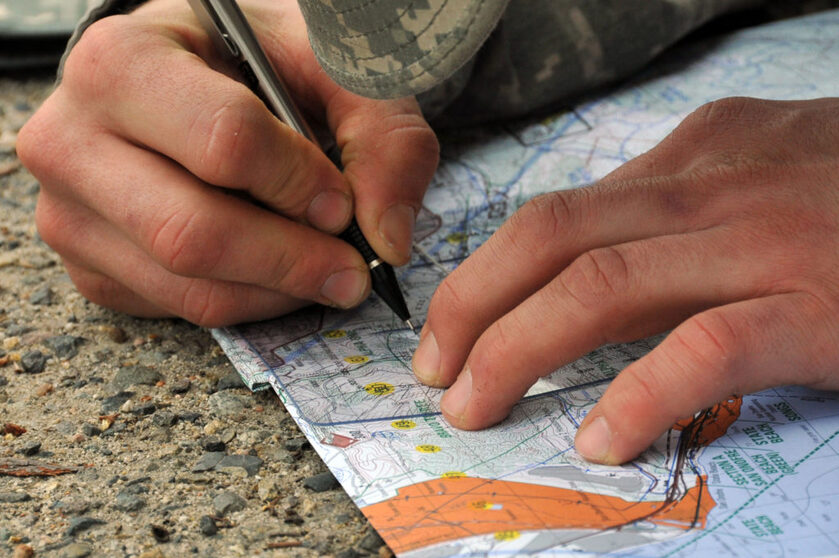Wilderness camping is an adventurous activity that allows individuals to connect with nature, test their survival skills, and experience the tranquility of the great outdoors. Planning and executing a wilderness camping trip requires careful preparation and navigation skills. With the advent of technology, computer map applications and GPS devices have become invaluable tools for outdoor enthusiasts. However, traditional methods, such as paper maps and compasses, still hold their importance. This essay explores how to effectively combine these resources for a successful wilderness camping experience.
Planning with Computer Map Applications
Computer map applications have revolutionized the way we plan and execute outdoor adventures, including wilderness camping. Applications like Google Maps, AllTrails, and Topo Maps are particularly useful due to their comprehensive features and user-friendly interfaces.
Google Maps, a widely used web mapping service, offers satellite imagery, street maps, and 360° panoramic views of streets (Street View). For wilderness camping, its satellite and terrain views can provide a broad overview of the camping area, helping campers to visualize the landscape they will be navigating. It also allows users to drop pins on specific locations, which can be useful for marking potential camping spots or points of interest.
AllTrails, on the other hand, is specifically designed for outdoor enthusiasts. It provides detailed trail maps, reviews, and photos from a community of millions of hikers, mountain bikers, and trail runners. The app offers a filter feature that allows users to find the perfect trail based on their preferences, considering factors like difficulty, length, and rating. It also provides information about the trail's elevation and whether it's suitable for activities like camping or bird watching.
Topo Maps offers high-quality topographic maps free of charge. These maps are particularly useful for wilderness camping as they provide detailed information about the terrain, including contour lines indicating elevation. This can help campers identify steep slopes, valleys, and flat areas suitable for setting up camp. Topo Maps also allows users to download maps for offline use, a crucial feature when venturing into areas with limited or no network coverage.
These applications also often include the ability to save or download maps for offline use. This feature can be a lifesaver when venturing into remote wilderness areas where cellular service is often non-existent. By downloading the necessary maps ahead of time, campers can ensure they have access to crucial navigation information throughout their trip, regardless of network availability.
Computer map applications like Google Maps, AllTrails, and Topo Maps are invaluable tools for planning a wilderness camping trip. They provide a wealth of information that can help campers prepare for their adventure, navigate the terrain, and stay safe in the great outdoors. However, while these tools offer many benefits, they should be used in conjunction with traditional navigation methods and always with an understanding of their limitations.
Navigating with GPS Devices
Global Positioning System (GPS) devices have become an integral part of outdoor adventures, including wilderness camping. They offer a range of features that can significantly enhance the safety and convenience of your trip.
GPS devices work by receiving signals from a network of satellites orbiting the earth. They use this data to calculate the user's precise location, typically within a few meters. This real-time location data can be invaluable during a camping trip, helping you to navigate unfamiliar terrain, track your progress, and find your way back to camp.
Many GPS devices also offer movement tracking features. This can be particularly useful on long hikes or treks, allowing you to see exactly how far you've traveled, the route you've taken, and even your speed. Some devices also allow you to pre-load routes, which can guide you along a specific path, reducing the risk of getting lost.
In addition to these basic features, some GPS devices offer advanced functionalities that can further enhance safety during your trip. Altimeters, for instance, use either GPS data or atmospheric pressure readings to determine your altitude. This can be crucial information when navigating mountainous terrain. Barometers measure atmospheric pressure, providing valuable data about weather conditions. A sudden drop in atmospheric pressure, for instance, could indicate an approaching storm.
Some GPS devices also include an emergency SOS feature. This allows you to send a distress signal with your exact location to a monitoring center, which can then coordinate a rescue operation. This feature can be a lifesaver in emergency situations. My device of choice here is the Garmin GPSMAP 67i.
However, while GPS devices offer many benefits, they should not be relied upon exclusively. Technology can sometimes fail. Batteries can run out of power, devices can malfunction, and signal reception can be poor in certain areas, especially dense forests or deep valleys. Therefore, it's important to balance reliance on GPS devices with traditional navigation skills. Knowing how to read a map and use a compass can be invaluable in situations where technology fails.
PS devices are a powerful tool for wilderness camping, offering a range of features that can enhance safety and convenience. However, they should be used as a complement to, not a replacement for, traditional navigation skills. By combining these tools, campers can ensure they are well-prepared for their outdoor adventures.
Utilizing Paper Maps and Compasses
Despite the proliferation of digital navigation tools, traditional methods like paper maps and compasses retain their relevance in wilderness camping. They offer unique advantages that make them indispensable tools for outdoor enthusiasts.
Paper maps, particularly topographic ones, provide a detailed representation of the physical features of an area. They show contours, elevations, bodies of water, trails, campsites, and other points of interest. This information is crucial for planning routes, identifying potential hazards, and finding suitable camping spots. Unlike digital maps, paper maps do not require a power source or a signal, making them reliable in all conditions. I use the CalTopo/SARTopo application to create paper maps at the specific scales I neew to take along on my trips.
Compasses, meanwhile, are simple yet powerful navigation tools. They use the Earth's magnetic field to indicate direction, helping campers orient themselves in the wilderness. When used in conjunction with a topographic map, a compass can help determine the exact position and plot a course to the destination. Like paper maps, compasses are immune to battery drain or signal loss. My compass of choice is the Cammenga Lensatic Compass, with a SUUNTO MC-2 (G) Mirror Compass as my backup.
Mastering the skills of reading a topographic map and using a compass are fundamental for any camper. These skills not only serve as a backup when digital tools fail but also enhance the camping experience. They foster a deeper connection with the environment by encouraging awareness and understanding of the landscape. Navigating with a map and compass requires observation of physical landmarks, interpretation of map symbols, and understanding of direction and distance. This active engagement with the environment can make the camping experience more rewarding and fulfilling.
Moreover, relying on traditional navigation methods can instill a sense of confidence and self-reliance. It can be empowering to navigate the wilderness using your skills and tools, independent of technology.
Despite the convenience of digital tools, paper maps and compasses remain essential for wilderness camping. They offer reliability, foster a deeper connection with the environment, and enhance the overall camping experience. As such, every camper should strive to master these traditional navigation skills.
Combining the Tools
The successful execution of a wilderness camping trip requires careful planning, reliable navigation, and the ability to adapt to unexpected situations. Both digital and traditional navigation tools play a crucial role in meeting these requirements, each offering unique advantages that complement the other.
In the planning stage, computer map applications provide a comprehensive overview of the camping area. They offer satellite imagery, terrain details, trail routes, and points of interest, which are invaluable for route planning and campsite selection. These applications allow campers to visualize their journey and familiarize themselves with the area before setting foot in the wilderness. They also offer the convenience of saving offline maps, ensuring access to crucial navigation information even in areas with limited or no network coverage.
During the trip, GPS devices serve as the primary navigation tool. They provide real-time location data, guide along pre-planned routes, and track movement, ensuring campers stay on course. Some GPS devices also offer additional features like altimeters, barometers, and emergency SOS, which can enhance safety during the trip.
However, despite the convenience and reliability of digital tools, they are susceptible to technical glitches, battery drain, or signal loss. This is where traditional navigation tools like paper maps and compasses come into play. They serve as reliable backups, ensuring campers are never left without navigation aids. Moreover, the skills required to use these tools - reading a topographic map and using a compass - are fundamental for any camper. They not only serve as a safety net when digital tools fail but also enhance the camping experience by fostering a deeper connection with the environment.
This multi-tool approach ensures preparedness for various scenarios, enhancing safety and enjoyment during the trip. It combines the convenience and accuracy of digital tools with the reliability and skill-enhancing nature of traditional tools. By effectively integrating these tools, campers can navigate the wilderness with confidence, fully enjoy their adventure, and ensure they are well-prepared to handle any situation that may arise.
The key to successful wilderness camping lies in the effective combination of digital and traditional navigation tools. This integrated approach ensures a well-planned, safe, and enjoyable wilderness camping experience.
Conclusion
Wilderness camping is a rewarding experience that tests one's resilience and adaptability. In the digital age, computer map applications and GPS devices have become crucial tools for planning and navigation. However, the importance of traditional methods like paper maps and compasses remains undiminished. By effectively integrating these tools, campers can ensure a safe, enjoyable, and successful wilderness camping experience.


















